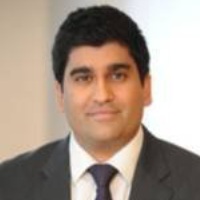Bfinance Australia’s Vishal Sharma says underlying conditions are improving for the macro strategies, but with performance varying greatly from one fund to the next, selecting the right manager is key to successful investing in the sector.
Spiking volatility and market reversals combined with unsuccessful bets on emerging markets and currencies made 2018 the third worst year in a quarter century for global macro managers.
Yet the year brought modest inflows for this strategy, bucking the trend of overall outflows from hedge funds. According to research by bfinance, US$2 billion of capital flowed into global macro hedge funds during the 12 months to November, while $14.7 billion flowed out of hedge funds overall.
Investors concerned about the end to a ten-year bull market have been drawn to macro strategies by the promise of convex returns – the potential for these funds to make money when equity markets are falling.
A good time for macro?
Global macro hedge funds typically invest in both long and short positions through a thematic approach, basing their investment decisions on high-level economy and political views for various markets or countries, rather than views on particular securities within those markets.
The average performance of global macro funds has been weak over the last decade, and our latest research shows that this trend continued in 2018, with a median return of minus 4 per cent.
However, the underlying reasons for lacklustre performance since 2010 – low rates, quantitative easing, low volatility, mono-directional equity markets – largely reversed in 2018. This was certainly a year for macro bets, with monetary policy diverging, volatility returning to normal levels and geopolitical uncertainties escalating. Many managers just made the wrong bets, or mistimed good calls.
There is another reason to be optimistic about global macro investing. The decade of poor performance has helped to facilitate a number of positive developments in this sector, which have made it more accessible and attractive to a broader range of investors. Global macro investing has evolved well past the stereotype of US mega-star hedge funds, with high fees, low liquidity and low transparency.
Today we see higher transparency, more liquidity and a wider range of pricing, partly linked to the rise of systematic strategies, which use quantitative analysis of price and non-price data to build portfolios and trade via algorithms. Systematic strategies differ from the still more common discretionary strategies, which construct portfolios based on qualitative views on global markets.
Selecting a manager
While tracking the median return of global macro funds gives an indicator of relative performance over time for the sector as a whole, the performance of individual funds within the sector is highly dispersed. Returns in 2018 ranged from -29 per cent to +18 per cent, based on macro funds with assets over US$100 million from Hedge Fund Research (HFR). Beyond the HFR databases, we have seen managers that have delivered returns above 20 per cent for 2018.
Two key factors determine a global macro manager’s performance: firstly, the hit rate of their thematic bets, and secondly, how the manager responds when that theme concludes – monetising the gain – or when the bet proves to be wrong, controlling the downside. When analysing returns, investors can consider the degree of consistency versus the magnitude of gains and losses.
Investors should be aware that global macro returns can be lumpy, depending on the manager’s risk attitude and the level of concentration of thematic bets. When choosing managers, or indeed, when determining what style will suit best, investors should consider their tolerance for that lumpiness. This can help, for instance, in considering whether a discretionary or a systematic strategy may be more suitable. Discretionary strategies tend to be more concentrated, and hence more uneven, than systematic strategies.
As with any investment strategy, returns alone don’t indicate a strong process. Asset managers should consider: does the manager fully understand their area of expertise and focus, and the regimes to which their pedigree is best suited? Where they’ve made their money, has it been in periods where one would expect their expertise to pay off? How consistent have they been in terms of sticking to particular bets or trading around themes? How have they behaved during challenging phases?
Although the current case for global macro investing appears strong, the high dispersion of returns in the sector means that manager selection is crucial for investors seeking exposure to this strategy.
Vishal Sharma is a Senior Associate at bfinance Australia






